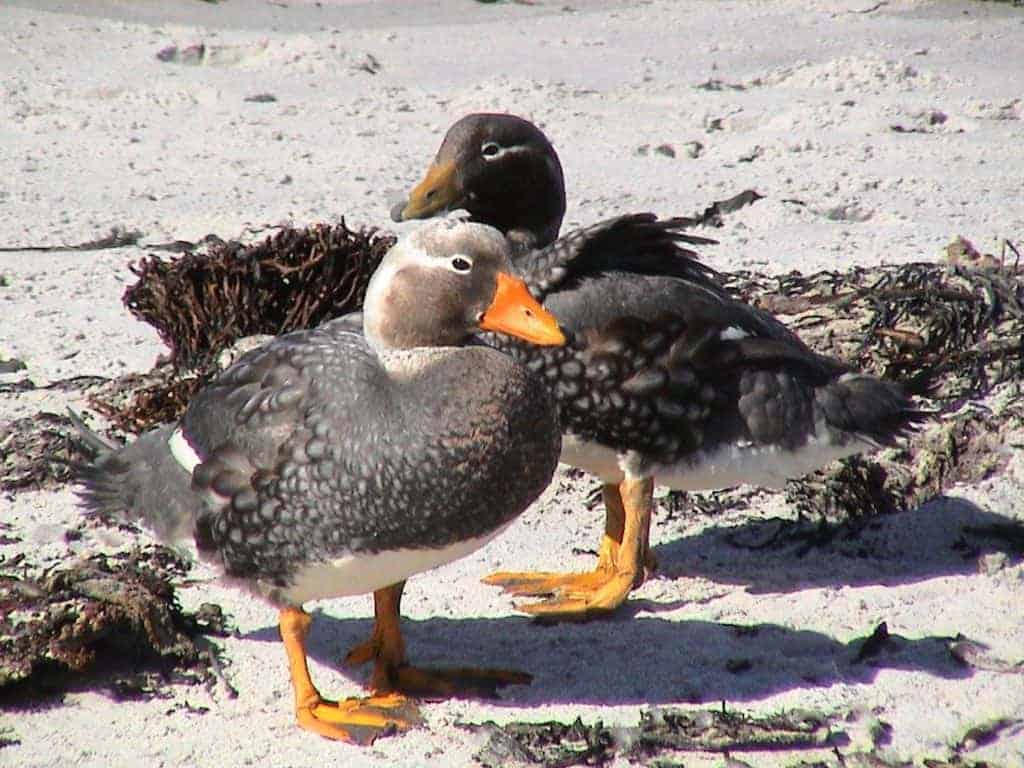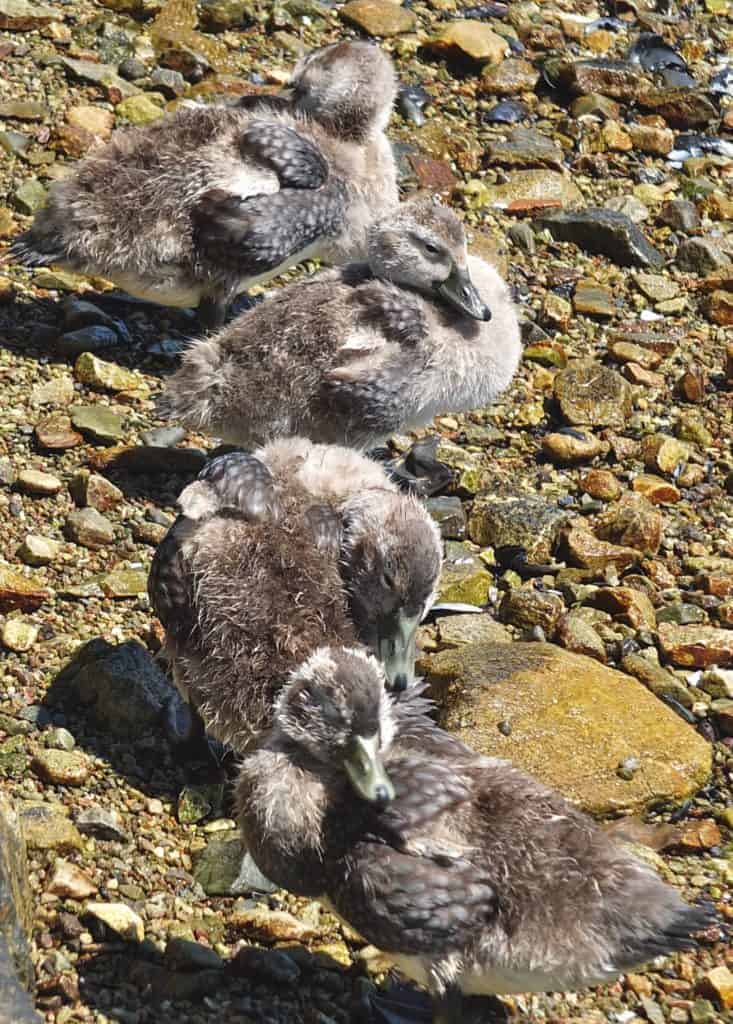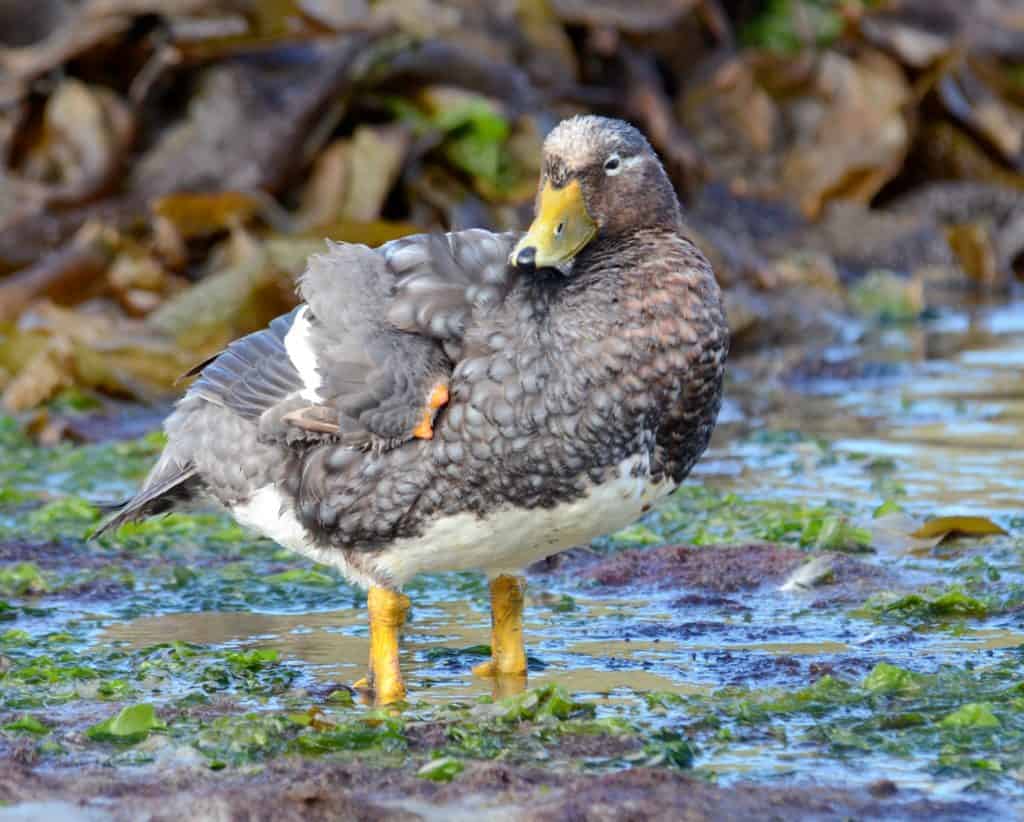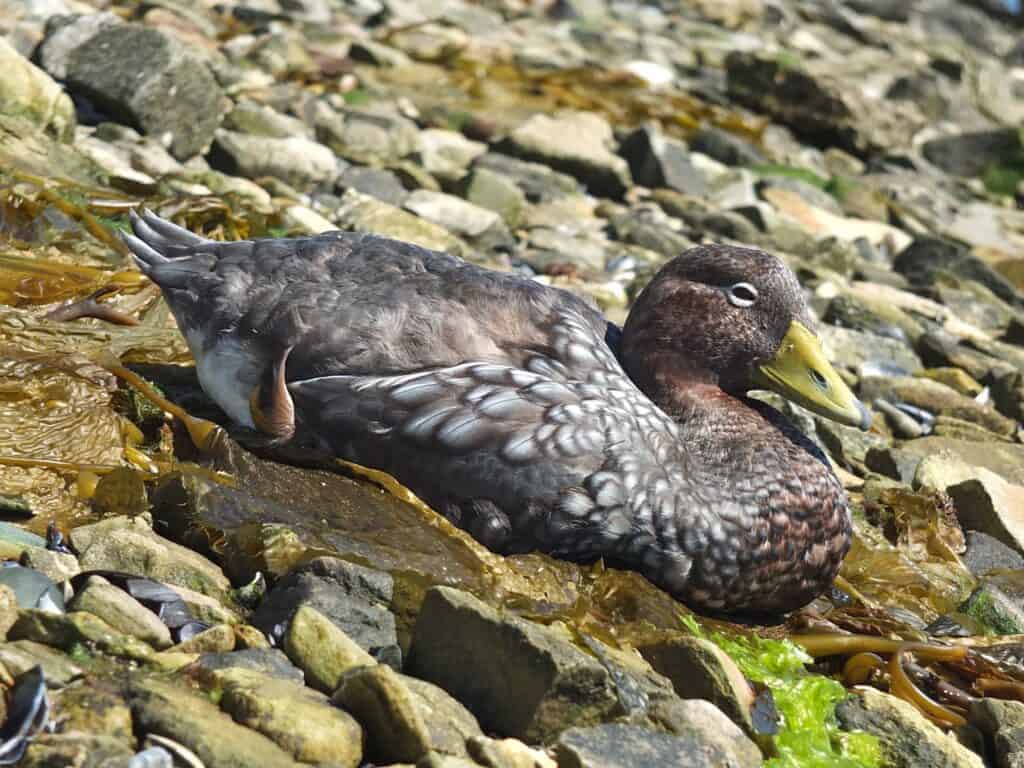Falkland Steamerduck


Tachyeres brachypterus
The Falkland Steamerduck is known locally as the ‘Logger Duck’. It is an endemic species to the Falkland Islands, and as such naturally has a relatively small population of <16,000 pairs. This is the smallest of the 3 flightless steamerducks but nevertheless a powerful bird. The pairs appear to bond for life and will vigorously defend their territory along the shore, to a couple of hundred metres inland.

Steamerducks feed on a variety of small marine animals living on the seabed. They will upend to feed in very shallow water, but mainly they dive to secure their prey. Mussels are a firm favourite and they have no trouble if they take in salt water. They have a large gland above and between the eyes which filters excess salt from the blood. The resulting concentrated salt is expelled through the nostrils.

A small number of Falkland Steamerducks were kept in the 1980s and 90s at a private collection near London where they were bred for the first time in captivity. Further birds were kept and bred at WWT Martin Mere. These populations died out and currently we believe there are no Falkland Steamerducks outside the Falkland Islands.
Nesting is typically near the shoreline or up to half a mile inland, among heath, fern and tussock grass. Clutches of 4–11 eggs are incubated for 28–30 days. Young are usually independent at 15 to 16 weeks.